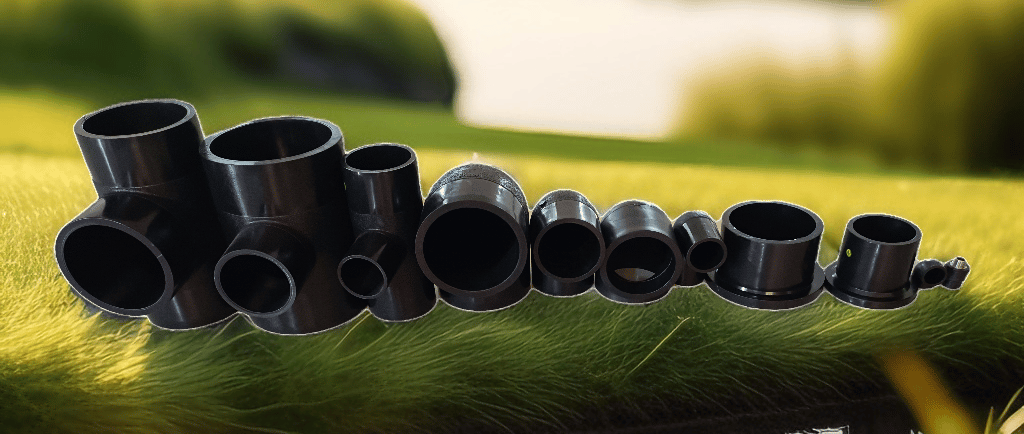Basic Properties of High Density Polyethylene (HDPE)
INDUSTRY NEWS
9/8/20244 min read


Introduction to HDPE
High Density Polyethylene (HDPE) is a thermoplastic polymer derived from petroleum. It belongs to the polyethylene family, which includes Low Density Polyethylene (LDPE) and Linear Low Density Polyethylene (LLDPE). HDPE is characterized by its high strength-to-density ratio, making it a versatile material in various industrial applications. Its molecular structure allows for a more tightly packed polymer chain, providing higher tensile strength and resistance to impact compared to other types of polyethylene.
The history of HDPE dates back to the mid-20th century when it was first synthesized by Karl Ziegler and Erhard Holzkamp. Ziegler's work with catalysts, specifically the Ziegler-Natta catalyst, revolutionized the polymerization process of ethylene, enabling the production of HDPE. Over time, this material has become crucial in manufacturing a diverse array of products, including containers, pipes, geomembranes, and plastic lumber.
The manufacturing process of HDPE typically involves the polymerization of ethylene monomers in the presence of a catalyst. The production can be carried out using various methods, such as slurry polymerization, gas phase polymerization, and solution polymerization. The key chemicals involved in this process include ethylene gas, hydrogen, and specific catalysts that control the molecular weight distribution and branching of the polymer chains.
From an environmental perspective, HDPE offers several advantages, particularly its recyclability. It is one of the most commonly recycled plastics, with recycled HDPE (rHDPE) finding extensive reuse in producing pipes, plastic lumber, and even new bottles. Recycling HDPE reduces the need for virgin material, thus minimizing the overall environmental footprint. However, challenges such as contamination and the need for proper sorting remain critical for maintaining the quality of recycled products.
In summary, HDPE's unique properties, including its robustness, versatility, and ease of recyclability, have cemented its position as a material of choice across industries. Its widespread application ranges from everyday household items to critical infrastructure components, underscoring its significance in modern manufacturing and sustainability efforts.
Physical and Mechanical Properties of HDPE
High Density Polyethylene (HDPE) is renowned for its distinctive physical and mechanical properties, which play a critical role in its widespread application across various industries. One of the primary attributes of HDPE is its density, which typically ranges from 0.93 to 0.97 g/cm3. This relatively higher density compared to other types of polyethylene, such as Low Density Polyethylene (LDPE) and Linear Low Density Polyethylene (LLDPE), imparts improved strength and rigidity to the material.
The tensile strength of HDPE is notably high, often surpassing 31.725 MPa. This strength allows HDPE to withstand significant stress and strain, making it suitable for demanding applications like piping systems and automotive components. Furthermore, its elasticity or flexibility is well-balanced, offering sufficient pliability without compromising structural integrity. For instance, the elongation at break can exceed 600%, allowing HDPE to deform without cracking or breaking under impact forces.
HDPE also boasts impressive hardness, generally falling within the Shore D scale of 60 to 70. This hardness, combined with high resistance to impact and abrasion, makes it an excellent choice for applications subject to wear and tear, such as playground equipment and industrial containers. Compared to LDPE and LLDPE, HDPE exhibits superior resistance to physical shocks and surface wear, ensuring longevity and durability in challenging environments.
However, the properties of HDPE can be significantly influenced by temperature and environmental conditions. At lower temperatures, HDPE can become more brittle, whereas at higher temperatures, it may soften. Therefore, the operational temperature range for HDPE is typically between -40°C and 80°C. In contrast, LDPE and LLDPE generally exhibit better performance at lower temperatures but lack the high temperature resistance and mechanical strength of HDPE.
In comparison, LDPE offers higher flexibility and low-temperature toughness, making it suitable for applications requiring substantial pliability. LLDPE, on the other hand, combines the properties of both LDPE and HDPE, providing moderate tensile strength and impact resistance. Nevertheless, HDPE's distinctive high density and superior mechanical properties make it the preferred choice for applications demanding robust and durable materials.
Applications and Benefits of HDPE
High Density Polyethylene (HDPE) has a broad spectrum of applications across various industries, driven by its unique properties and versatility. In the packaging industry, HDPE is extensively utilized due to its durability and moisture resistance. Common products include milk jugs, detergent bottles, and plastic bags, all benefiting from HDPE's strength and recyclability, which significantly reduces environmental impact.
In the agricultural sector, HDPE is used to manufacture products like pipes for irrigation systems and geomembranes for soil protection and water conservation. These applications leverage HDPE’s high resistance to chemicals and UV radiation, ensuring longevity and performance in harsh environments. The automotive industry also employs HDPE for fuel tanks, bumpers, and interior panels, as it provides a combination of lightweight structure and high impact resistance, contributing to vehicle efficiency and safety.
The construction industry benefits substantially from HDPE’s properties. HDPE pipes are widely used for water distribution and sewage systems due to their robustness and corrosion resistance. Additionally, plastic lumber made from HDPE is becoming a popular alternative to traditional wood in decking and outdoor furniture, offering weather resistance, low maintenance, and sustainability.
Consumer goods are yet another area where HDPE plays a crucial role. From toys to household items and even containers, HDPE ensures product safety and durability. Its use in such diverse products underscores the material's adaptability and reliability.
The benefits of HDPE applications extend beyond functional advantages. The cost-effectiveness of HDPE, combined with its recyclability, positions it as an environmentally sustainable option. Innovations in HDPE formulations, such as the development of bio-based HDPE and enhanced recyclable grades, are paving the way for future advancements. These innovations are set to expand HDPE’s applications further, contributing to more sustainable industry practices and products.
In summary, the diverse applications and inherent benefits of HDPE make it an indispensable material across numerous industries, with an evolving scope driven by ongoing innovations.
